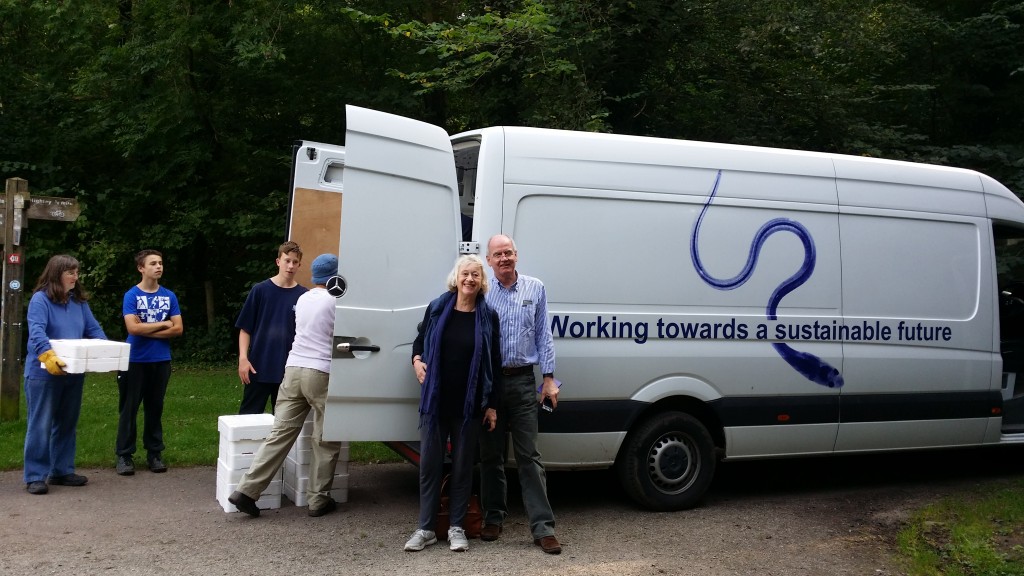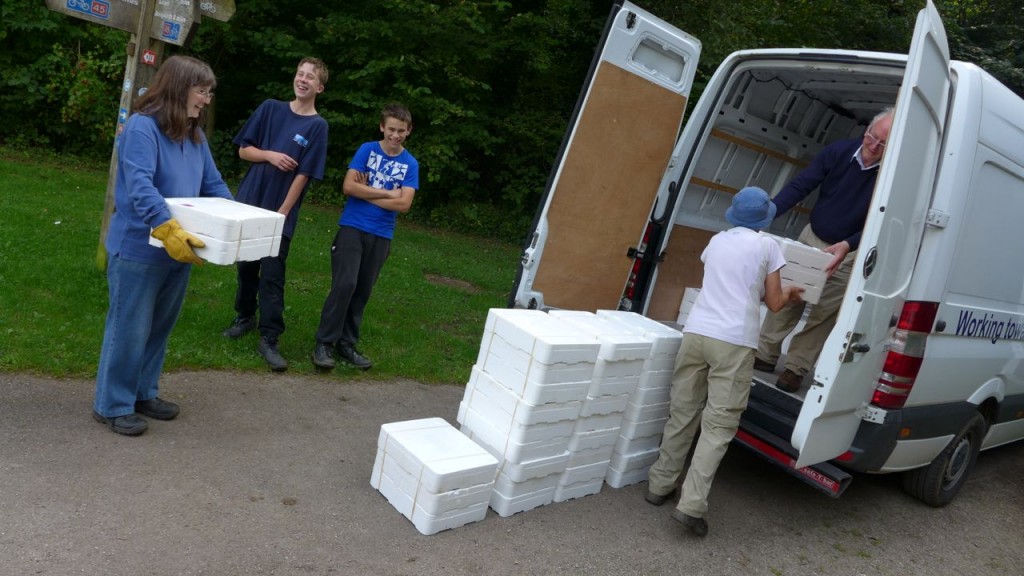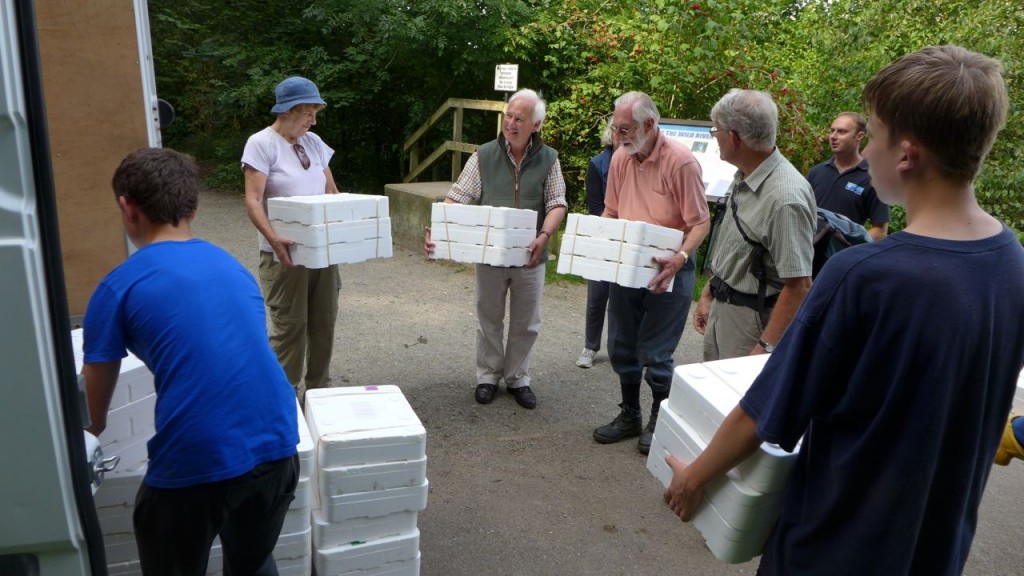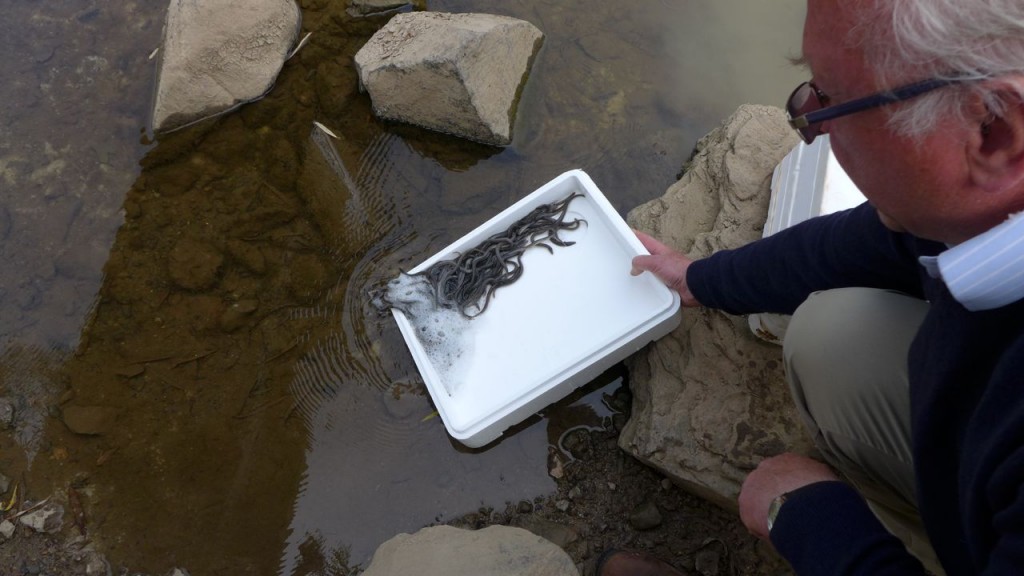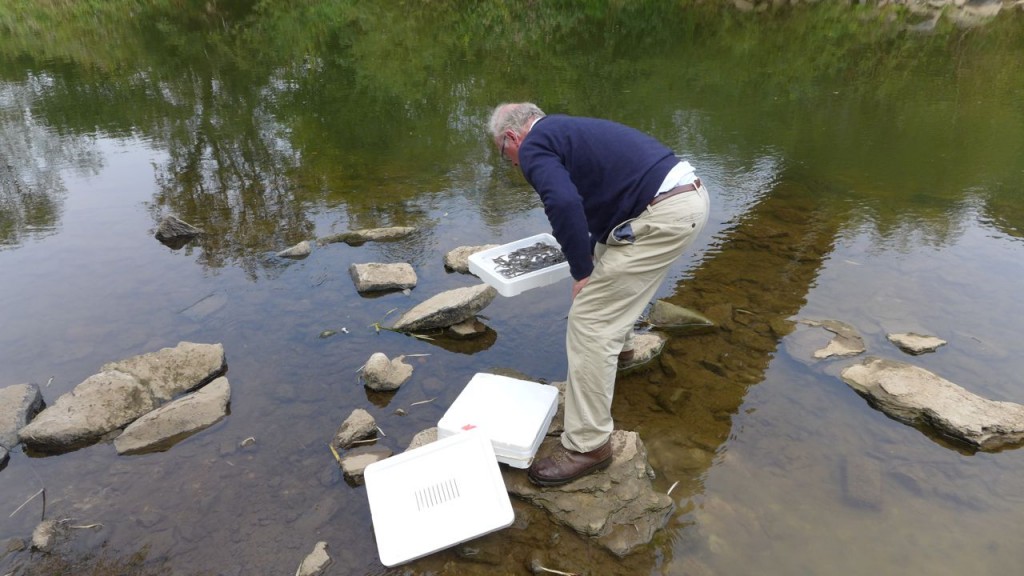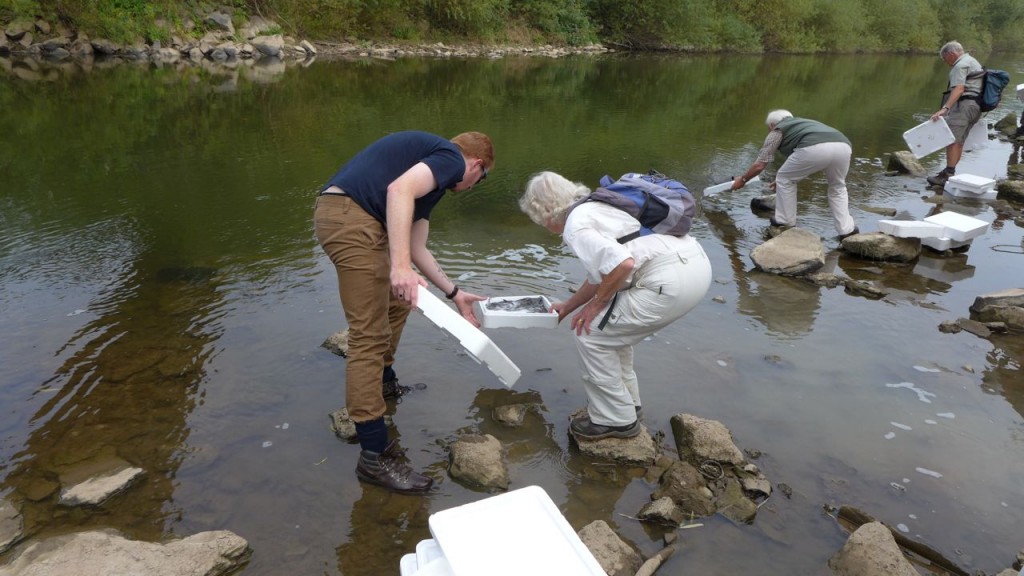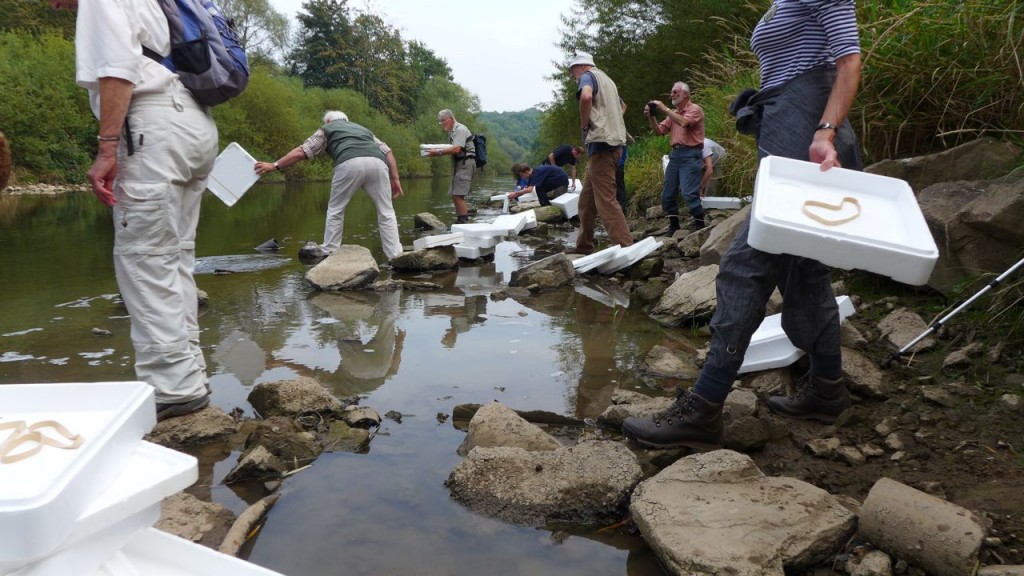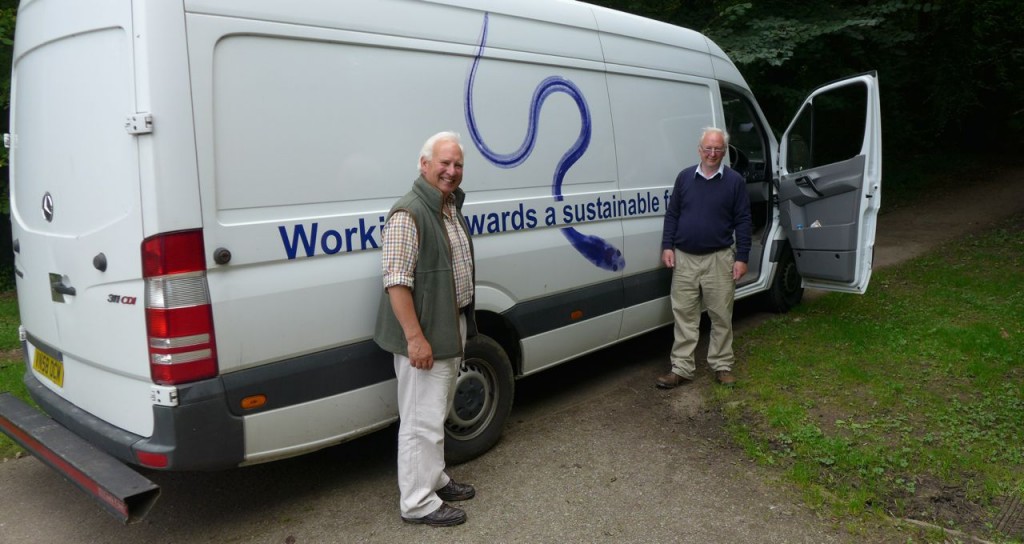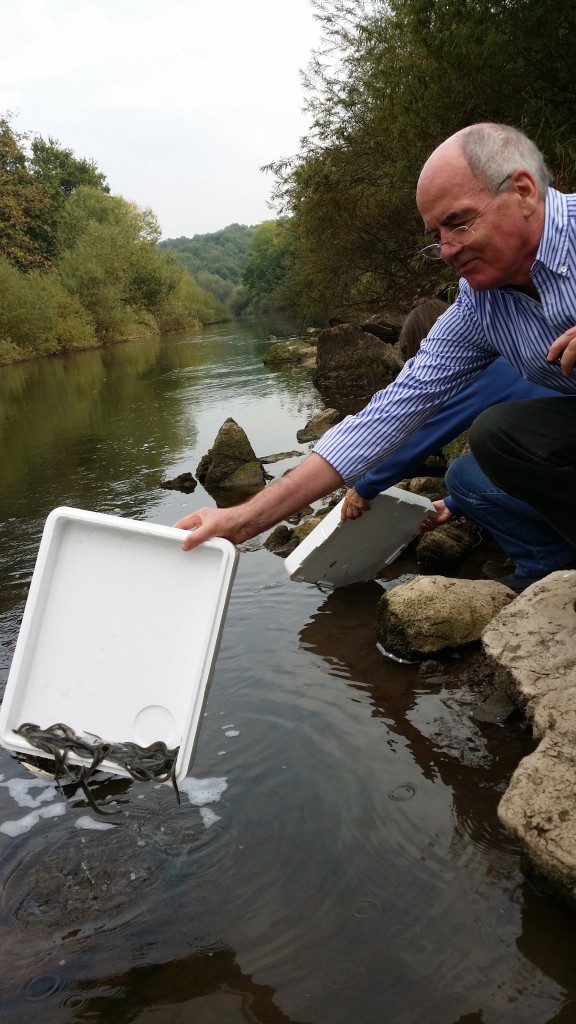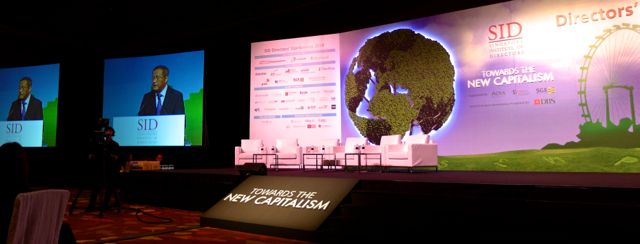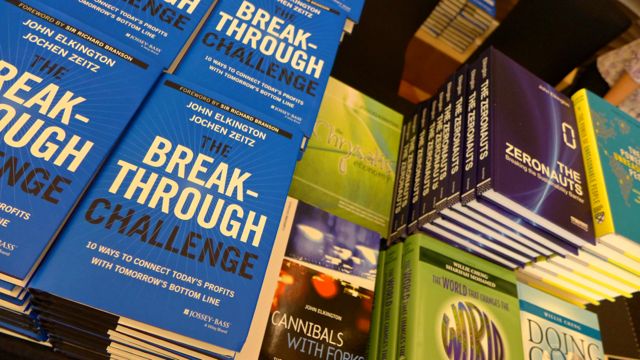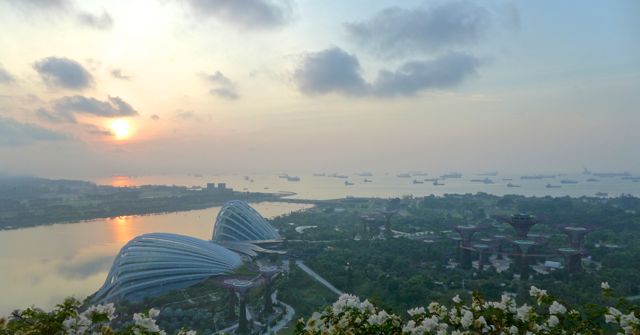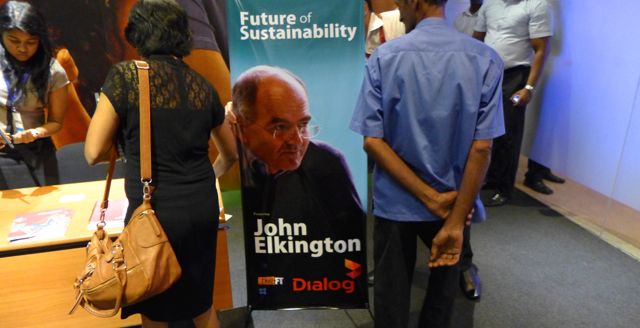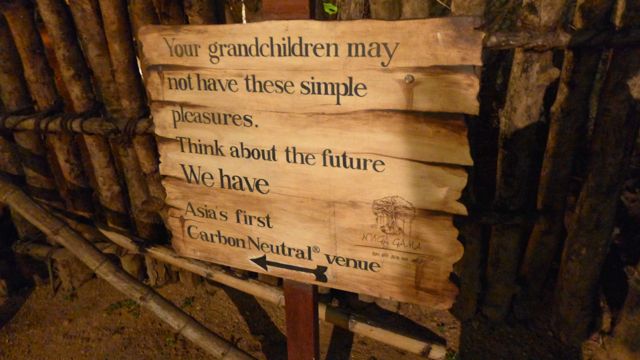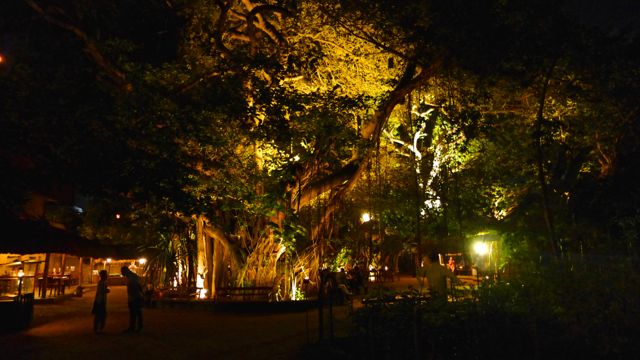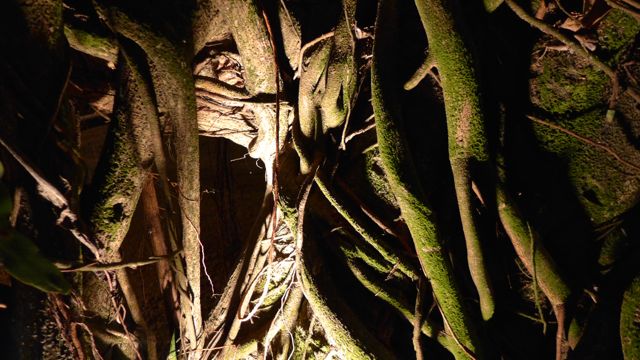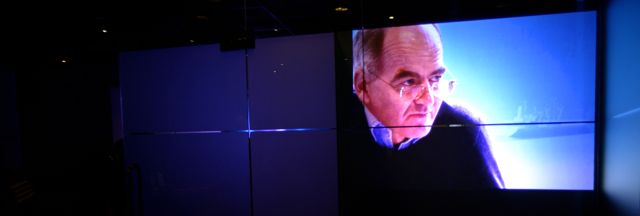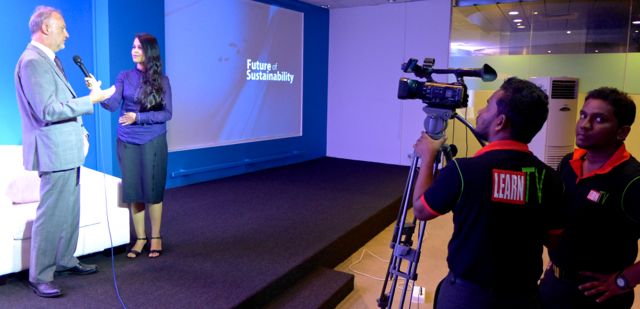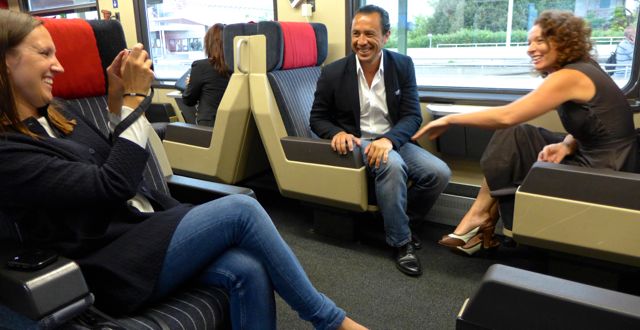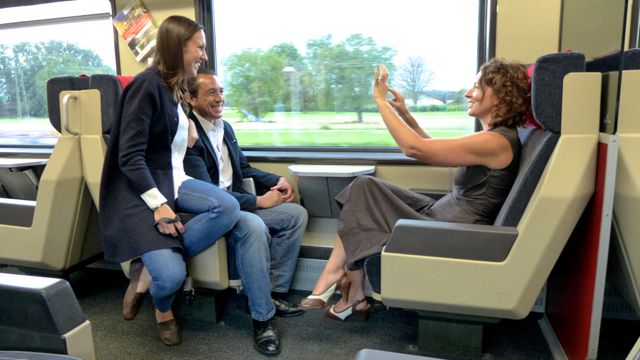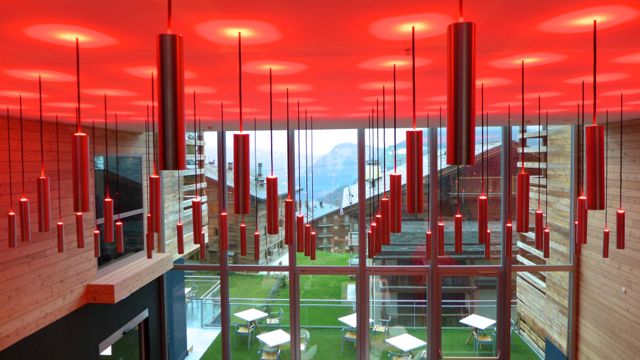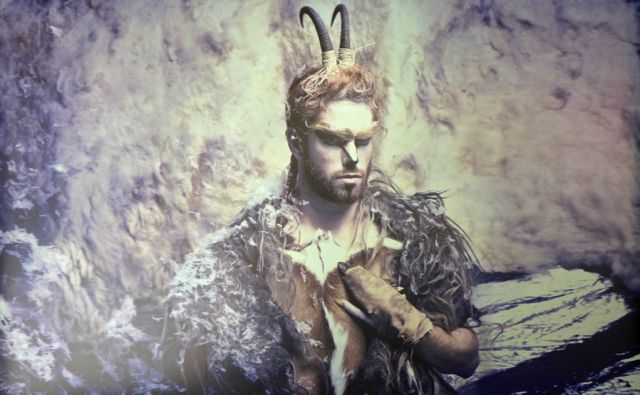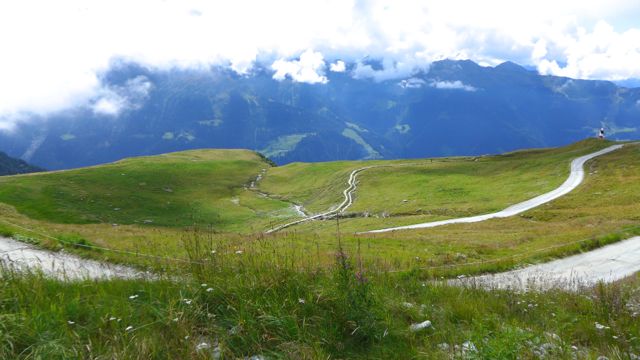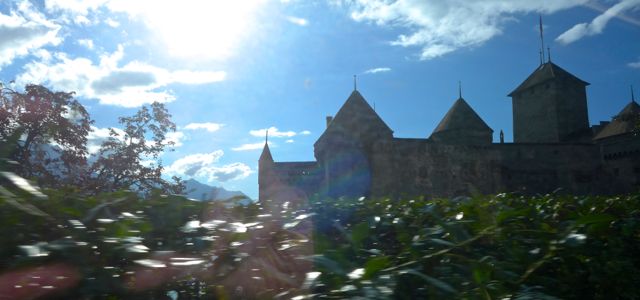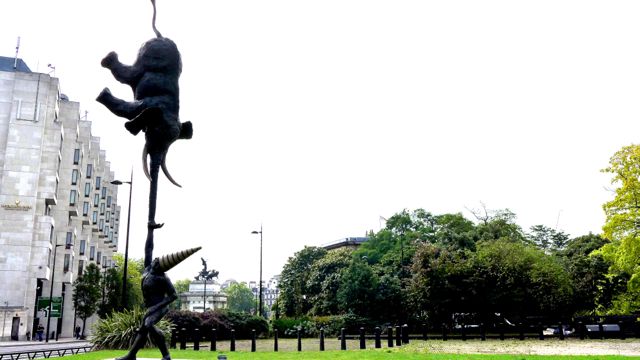A different type of white van men/people (photo: Andrew Kerr)
Drove west yesterday, to stay overnight with Pat, Tim, Caroline et al at Hill House, and then on through Stroud this morning to Stonehouse. There we met Andrew Kerr, chairman of the Sustainable Eel Group. Elaine and I had recently made a small donation to SEG, having seen coverage of their first eel release on Springwatch TV programme. Next we drove north, with Andrew, beyond Kidderminster, to take part in the first of three eel drops into the Severn.
By way of historical and emotional context, I told the story of how glass eels brought me into the environmental field at a very tender age in the New York Times, a couple of years back.
The catastrophic decline in eel numbers in Europe in recent decades has seen them end up on the list of critically endangered species. The number of baby eel produced each year is only 1% of what it was before the 1980s. EU legislation now requires that EU countries take measures allowing 40% of adult eels to escape from inland waters to the sea, where they can spawn. Among measures now being pushed are controls on the number of eels taken, the redesign of barriers like weirs and dams to allow eels (and other fish) to pass through, and the restocking of inland waters with young eels—which is what we were up to on the banks of the Severn.
But there is good news, too. Andrew explained what had been happening on the Severn and the nearby River Wye. Fishermen using artisanal nets reported the lowest-ever number of eels caught in 2009: just 1 million. By contrast, over 30 million eels were caught this year, suggesting that the numbers of eels has somehow risen back to levels typical 30 years ago.
So what is going on? Is the seeming breakdown of a key ecological resource being reversed by unknown factors out in the distant Sargasso Sea, where European eels spawn? Is this part of some giant natural cycle? Or is the work of organisations like SEG starting to turn the tide of extinction? I suspect we are seeing a combination of all these factors at work—and others, too. Have done articles today for future issues of Director and Monday Morning magazines, providing more detail.
And here is a link to the latest edition of SEG’s newsletter.
What a privilege to be a small part of such a project – and huge kudos to Andrew and to Peter Wood, who is the man responsible for incubating glass eels to the point where they are ready for release. It is clear that the SEG team is massively invested, in every sense, in restoring the European eel to its rightful place in the landscape. They deserve the Golden Eel Award (when it can be created) at the very least.
And here are some other photos of the release we took part in:
Unloading
Ready to rumble
Anxious to be out of there
Peter (Wood) releases an early batch, into reflection of the bridge above
The work continues – all the boxes (and even the rubber bands) were collected afterwards
The great escape continues
Andrew, centre, makes a splash
A sense of release
Andrew and Peter, the van about to head off to the next drop
And the proof that I did my bit? Well here’s the shot Andrew took at the magic moment, as I released pretty much the last batch to go at this site:

